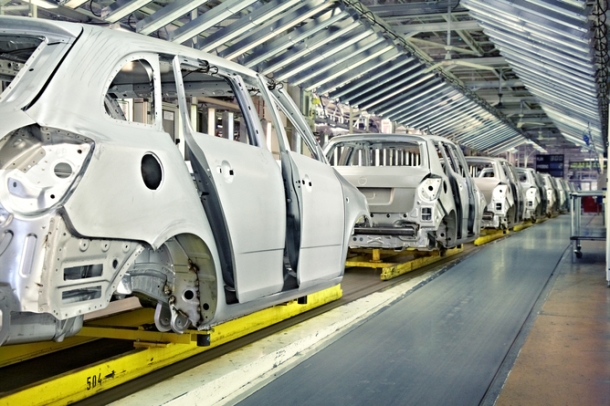
“By international standards our support [of the automotive industry] is modest, so we have to work hard to attract the new investment.” – Industry minister Senator Kim Carr, Lateline, 22 July.
The idea that the future of car manufacturing in Australia is on shaky ground is nothing new. But Carr’s comments come at a time where both major parties are trying to convince the sector and voters that their policies will keep the industry alive.
Prime Minister Kevin Rudd met South Australian premier Jay Weatherill last night, with reports suggesting more government assistance might be on the way for Holden. So when it comes to supporting auto manufacturing, how does Australia compare internationally?
The answer depends somewhat on how you define “support”. Direct subsidies usually comprise cash injections. But there are also indirect subsidies, which are more opaque and more widespread. These can include tax incentives such as research and development tax deductions and export subsidies such as tax deductions or any other direct financial contribution to an exporting industry.
Tariff protection also provides a form of subsidy, as tariffs tax imports, meaning other products are less price competitive. Similarly, luxury car taxes can give locally-produced vehicles a competitive edge.
If we just look at direct subsidies and tariff support in Australia, under the current Labor government car plan $A5.4 billion will be extended in subsidies to the industry over 13 years from 2008 to 2020, totalling about $A415 million a year.
Over the last 10 years or so, Holden has received $A1.8 billion – $A150 million each year from a potential $A2.17 billion pool – while Ford has obtained an estimated $A1.1 billion.
Toyota will not comment officially on subsidies, but it is estimated the Japanese company received about $A1.2 billion in the last decade.
So in per capita terms (see Table 1), Carr is correct: government funding is modest in comparison with other developed countries, such as Germany and the United States.
 Table 1 PPB Advisory Automotive, May 2013.
Table 1 PPB Advisory Automotive, May 2013.
When you look at the cost of government funding for each vehicle produced, Australia sits in between these two countries. Each Australian unit costs the taxpayer approximately 1.5 times that of a German vehicle but only around 67% that of a US-produced vehicle, despite the scale economies available to the American auto industry.
How do we compare?
When you compare Australia to a few other key markets, our direct subsidies are dwarfed by those overseas.
For example, in the United States, the Bush and Obama administrations allocated $US80 billion to direct assistance under the Automotive Industry Financing Program. This included rescuing automotive firms’ financing operations, such as the General Motors Acceptance Corporation (GMAC). There were also debt guarantees. Treasury notes that it has recouped almost $US51 billion of the $US80 billion allocated to the program.
An extensive New York Times investigation found that Chrysler received at least $US1.4 billion since 2007 from 14 grants in 3 states. GM received $US1.77 billion from 208 grants, while Ford was awarded more than $US1.58 billion from 119 grants.
The Canadian automotive industry, which has some similarities to Australia’s, also received $CA4 billion in loans in 2008, alongside manifold existing federal and state subsidies for GM Canada and Chrysler Canada. These loans were also extended beyond the 2008 financial crisis.
The European Union
The European Union also heavily subsidises its industry.
Most recently, considerable French subsidies have been announced for “green” or electric vehicles. And in 2009, Germany introduced a €5 billion “cash-for-clunkers” scheme.
EU countries have also employed state aids extensively from the 1980s, like investment aids, export credits and insurance, corporate rescues, research and development contracts, and direct cash injections into public and private-sector firms. National governments also provide (overtly or covertly) discounted loans or (sometimes unlawful) subsidies to firms.
The EU auto industry remains the recipient of considerable direct and indirect subsidies as a consequence of these complex national and EU policies. But it requires wading through thousands of pages and years of reports on state aid in order to gain even an approximate notion of the level of support afforded the automotive industry and other manufacturing sectors in Europe.
Costs of production
In Australia, the domestic manufacturers in 2012 produced approximately 140,000–150,000 vehicles. This represents a minuscule proportion of global vehicle output, which accounted for 63 million units in 2012. Australia ranked 29th among domestic vehicle manufacturers in 2011, with 148,000 units, which is only approximately 10% of total domestic vehicle sales (see Table 2 below).
 Table 2. 2012 figures based on industry estimates. : Key Automotive Statistics 2001-2011. 2012 figures based on industry estimates.
Table 2. 2012 figures based on industry estimates. : Key Automotive Statistics 2001-2011. 2012 figures based on industry estimates.
But it’s important to note that the unit cost of Australian-made models is four times that of Asia and twice that of Europe, according to Ford Australia’s comparisons with its international manufacturing costs.
Consequently, the lack of scale, the costs of importing key components and labour costs result in higher unit costs for taxpayers compared with more heavily-subsidised, but more efficient producers, such as Germany. By contrast, the Australian industry is more efficient and less costly to maintain in both per capita and unit costs than vehicles produced, for example, in the United States and elsewhere.
Verdict
Carr is correct: by international standards, annual assistance to the Australian automotive industry is relatively modest in raw dollar and per capita terms.
Review
This is a balanced assessment of the claim. It clearly defines “direct” assistance as cash transfers to car companies and tariffs on imported motor vehicles. These are both transparent, easily quantified and selective, as they only apply directly to the local car industry.
On this measure, assistance to the local car industry is indeed modest compared to what other nations provide. Often in international comparisons of assistance to the industry, the measure is assistance divided by population. This is a figure often quoted by Carr as the basis for the claim regarding the “modest” nature of local assistance.
If this direct assistance measure is applied on a per unit car production basis, government assistance moves from being modest to middle-ranking. This is because Australia produces many fewer cars than other nations. – Phillip Toner.
The authors
Remy Davison
Jean Monnet Chair in Politics and Economics at Monash University
Dr. Remy Davison is Jean Monnet Chair in Politics and Economics at Monash University. He is a Conflict Expert for the United Nations, New York, and a member of the Council on Optimising Government Performance.
Phillip Toner
Honorary Senior Research Fellow Department of Political Economy at University of Sydney
Dr Phillip Toner is a Senior Research Fellow in the Department of Political Economy at the University of Sydney.
He was formerly a Senior Research Fellow in the Centre for Industry and Innovation Studies at the University of Western Sydney.
Phillip’s PhD was on the role of manufacturing industry in economic development. The thesis was published by Macmillan U.K. in 1999 as ‘Main Currents in Cumulative Causation: The Dynamics of Growth and Development’.
Phillip’s major areas of research interests include industrial structure analysis; industry policy; the economics of technical innovation; labour market analysis and comparative national skills formation systems.
Over the last five years Dr Toner has undertaken research on the VET system for the National Centre for Vocational Education Research; NSW Board of Vocational Education and Training; NSW TAFE Commission; Department of Industry Science and Resources; Department of Employment, Workplace Relations and Small Business; Australian Industry Group; Australian Chamber of Commerce and Industry; Master Builders Association; BIS-Shrapnel; Dusseldorp Skills Forum; Construction Training Australia; Group Training Australia and the RTBU, AMWU and CFMEU. In 2003 Dr Toner was granted a three year Australian Research Council Linkage grant to examine the sustainability of on-site labour supply for the Australian construction industry. These projects have stimulated significant policy debates. He is a regular media commentator and opinion writer for the Australian Financial Review, Sydney Morning Herald, ABC radio and ABC 7.30 Report. He has also prepared submissions to, and appeared before, several state and commonwealth government inquiries on industry policy and vocational training.
He has published extensively in Australian and overseas journals including the Cambridge Journal of Economics; Journal of Contemporary Asia; Issues & Studies: A Quarterly Journal on China, Taiwan and East Asia; Journal of Industrial Relations; The Economic and Labour Relations Review; Australian Bulletin of Labour and Labour & Industry.
This article is reproduced with permission fromm The Conversation





